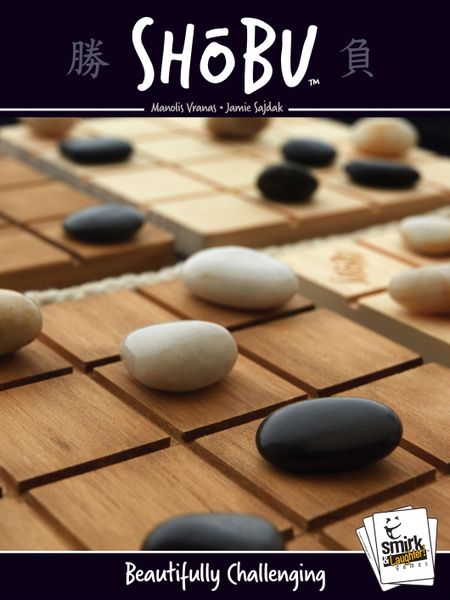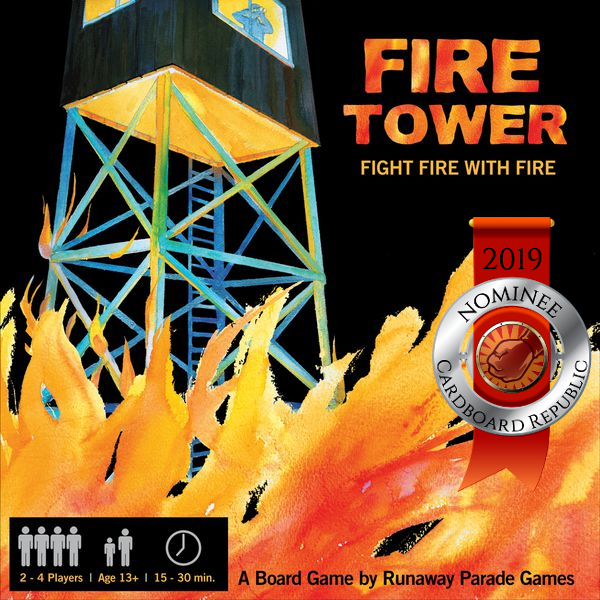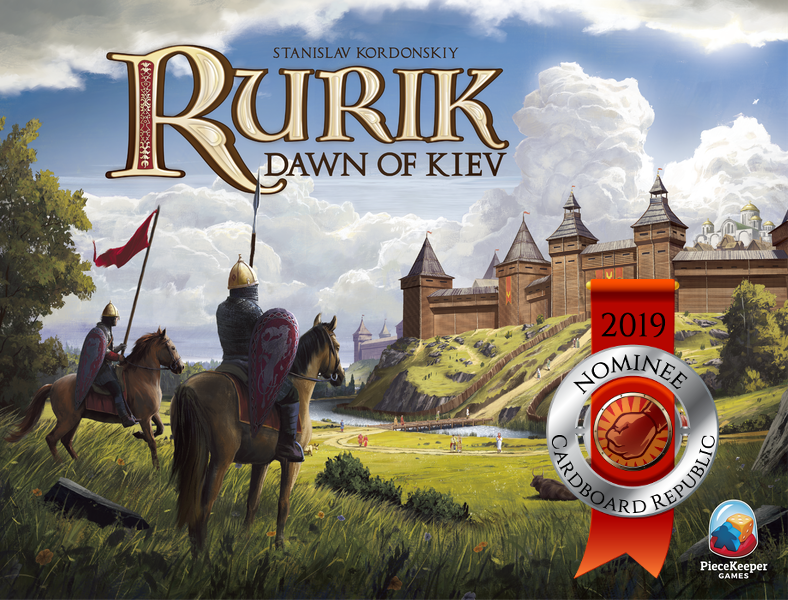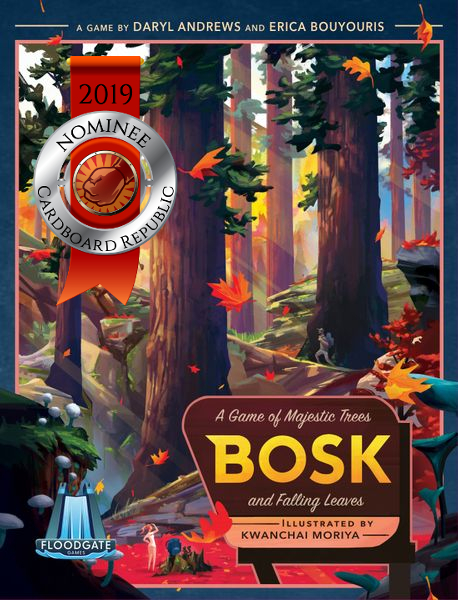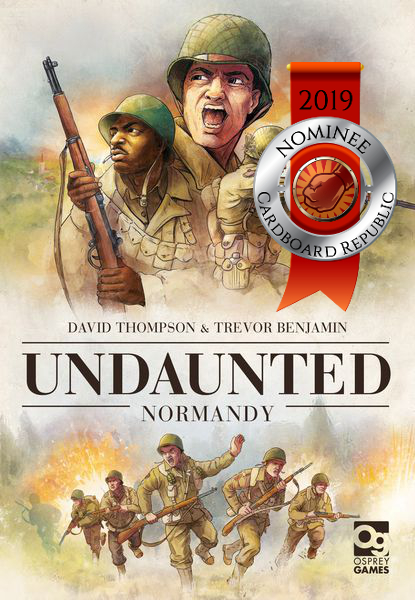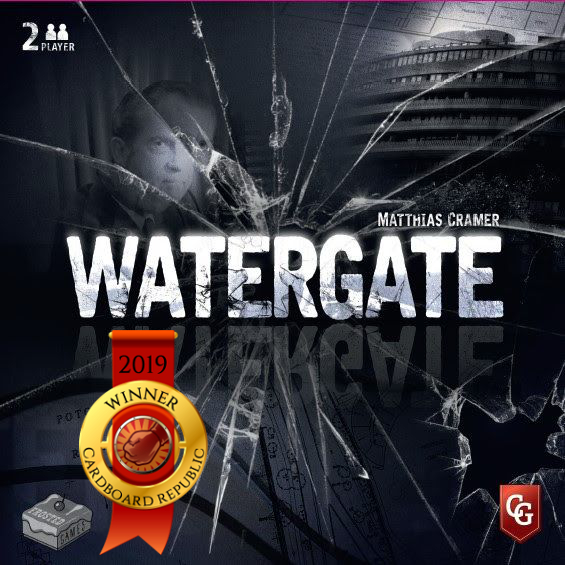The Cardboard Republic has rolled out the annual Laurels of the Republic awards, celebrating the best new games released in 2019 for each of the gamer archetypes. What follows are the finalists for one of those groups.
 Always looking for the next conflict, Strikers are those who prefer to make bold, declarative statements in their games. Their ambitions are simple: win by any means necessary, and do it quickly if possible. Strikers thrive in games where there are clear goals and the player’s chances of a particular strategy isn’t going to completely fall apart due to high degrees of luck or overly-lengthy affairs where their opponents will have ample opportunities to stop them. In short, the best Striker games are those where they are given a pointy stick and told in which direction to swing it.
Always looking for the next conflict, Strikers are those who prefer to make bold, declarative statements in their games. Their ambitions are simple: win by any means necessary, and do it quickly if possible. Strikers thrive in games where there are clear goals and the player’s chances of a particular strategy isn’t going to completely fall apart due to high degrees of luck or overly-lengthy affairs where their opponents will have ample opportunities to stop them. In short, the best Striker games are those where they are given a pointy stick and told in which direction to swing it.
And with that, here are The 2019 Laurel Finalists for Strikers:
Honorable Mention: SHŌBU
Publisher: Smirk & Laughter Games | Players: 2 | Play Time: 20-30 Minutes
There is no denying that today’s board games are among the best produced, best looking, most visually appealing titles the hobby has ever seen. In an ever more crowded field competing for your attention, the prevailing wisdom is that you need to do whatever it takes to make your game stand out. On the one hand, many games receiving premium treatment come across as highly artistic, laudable luxury products. However, it also propagates this philosophy that bigger is always better and that the more stuff a game has, the better its gameplay will become.
This is not true, of course; a mediocre game that looks gorgeous doesn’t absolve the problem of it being mediocre.
It also doesn’t explain the inherent value of the marvelous SHOBU, a game literally comprised of four pieces of wood, a fistful of stones, and a piece of rope. Rope which doesn’t even serve an in-game purpose.
In this quick and concise minimalist masterpiece, SHOBU is solely about removing your opponent’s pieces from the board. It consists merely of four 4×4 grids (2 light, 2 dark) arranged in a square, with the row closest to you on each grid containing four of your colored stones and the furthest row containing those of your opponent. On your turn, you may move one of the 8 stones closest to you 1-2 spaces in any direction, so long it doesn’t bump into another stone. Then, you must mirror that same movement on either board of the other color – with the exception that this movement can push another stone around. Say, like off the board. The first person to knock off all four of their opponent’s stones from just one of the boards wins.
SHOBU may be a product of 2019, but with its inherent appeal emblematic of some of the world’s most classic abstracts, the game feels like something that has been enjoyed for centuries. Thanks to its singular goal and gameplay decided exclusively by one’s mettle, SHOBU is precisely the kind of game Strikers are drawn to, frills or not, and is well deserving of its honorable spot on this list.
The Nominees

Number Five: Fire Tower
Publisher: Runaway Parade Games | Players: 2-4 | Play Time: 20-30 Minutes
In this game, whose tagline is “fight fire with fire”, they mean it literally.
In this fast-paced flash-in-the-pan scenario, 2-4 players are each operating their own forest fire observation post as a fire quickly spins out of control. However, a co-op game this is not. Instead, in a quirky thematic subversion of firefighting expectations, your goal isn’t to put out the fire: it’s to be the last tower standing. This involves containing the fire to a small degree, yes, but mostly as a means to an end to ensure your own safety. Instead, a majority of your efforts are focused on shifting the direction of the fire towards your opponents’ towers.
With its tongue firmly in cheek, Fire Tower is remarkably straightforward. Each turn, a player adds a fire token to the board adjacent to an existing fire token in the current direction of the wind, as denoted by the game’s windrose. Then, they play a card from their hand. These cards vary in function, but most either help spread the fire, change the wind direction, add protective barriers to the board, or extinguish parts of the fire that may be getting too close. Repeat again and again until all but one player has been overrun by the unrelenting spread of elemental fury.
Coming off a fairly decent Kickstarter delivery in February, Fire Tower didn’t garner the same explosive coverage as other titles on this list. Yet its direct and honest goal, nearly hypnotic orange fire tokens, and playfully capricious premise all worked to help word of its appeal spread. Although it has a degree of luck due to the card draws, Strikers were still nevertheless warmly drawn to this one in large part because your job isn’t to overcome or temper the randomness as much as funnel it towards your opposition with zealous alacrity. Fire Tower is quick, unforgiving, and relentless – your only focus is to win. But it also never strays into overt malice despite both its theme and purpose, making it a lightweight competitive title that this group is drawn to like moths to a flame.
Number Four: Rurik: Dawn of Kiev
Publisher: PieceKeeper Games | Players: 1-4 | Play Time: 60-120 Minutes
There was no shortage of area control titles to choose from in 2019, ranging from tiny abstracts to several colossally successful minis games with more plastic to look at than a recycling center. Within there lay Rurik, an objective-centric game about the founding of the Kievan Rus: the federated states of Eastern Europe from the 9th-13th centuries and the cultural progenitors of who we now call Russians.
Rurik is particularly laudable because despite all the outward trappings of your typical ‘dudes on a map’ affair, the game is more substantive than merely who can swing their axes the hardest or hold the most territory. Here your goal over several rounds is to generate the most VP by advancing along several tracks and accomplishing various goals. Marching across the map to bring low the forces of your opponents like a marauding warlord is certainly one such path, but you can also win by doing the exact opposite via building structures, collecting resources, and accomplishing hidden agendas.
All of this is driven by Rurik’s ingenious “action programming” system, whereby each round you assign workers of various strengths to a handful of board action spaces. High valued workers generate more powerful actions but are resolved in reverse order. Between the efficacy of your actions, the timing and order of when they are resolved, and attempting to account for the intentions of your enemies, Rurik demonstrates its aptitude as a taut, mechanically-laden exercise in advancing your own itinerary while trying to curtail those of your opponents.
Oh, and then there are the bribes, making your workers temporarily more powerful, which adds another layer of scheming.
Hey, you’re working with nobility. Scruples are an optional thing.
With few workers and fewer rounds, time is of the essence in Rurik. Both careful plodding and shrewd tactical maneuvering are necessary as everyone struggles for dominance in these harsh and troubled lands. The game’s malleability of focus and inherently competitive edge combine into an experience that fits perfectly into the sort of settings that Strikers enjoy while still offering something more innovative than simply being another game centered around unmitigated conquest. And that’s hard to say nyet to.
Number Three: Bosk
Publisher: Floodgate Games | Players: 2-4 | Play Time: 30-45 Minutes
The first thing anyone notices about Bosk is how vibrant and positively delightful it looks on a table when playing. From its three-dimensional trees to the resplendent autumnal color palette that evolves over the course its gameplay, Bosk is an undeniably pretty game that entices you to dive in like a pile of freshly raked leaves.
The second thing that gets noticed is that upon doing so Bosk reveals it’s not nearly as congenial as its pastoral visage lead you to believe. While still not particularly complex, Bosk surprises a lot of first time players with how it plays out. Because just as last year’s Laurel winner Root cleverly tricked people into loving what is essentially a war game, Bosk does with a game entirely about area majority.
Played out over two distinct phases, Bosk represents the life cycle of a forest over the course of a year. During the first half, reflecting growth, players place trees of varying value along the intersection points of a colorful gridded woodland map. Afterwards you score points based on who has the higher sums of those values along each row and column.
Then like the ephemeral seasonal winds themselves, the focus of Bosk shifts entirely. During the second half of the year, reflecting decline, players take turns removing those trees and carefully spread leaf tokens equal to those same values along the board according to the rotating direction of the wind. Leaves stack atop one another in the process, and although this paints a pretty picture, in the end only the leaves atop each pile matter. For in the game’s second scoring, you gain points in each of the board’s regions based on who has the most leaves of their color.
There’s also a squirrel who helps in this process. We call him Frank.
Bosk is light, bright, and full of fight, making it precisely the kind of competitive stroll that Strikers are fond of taking. With a dual-natured contest over territory and the need to think tactically about the inextricable link between them, Bosk offers up an unexpectedly lively competition over trees in a game style that, paradoxically enough, has more bite than bark.
Number Two: Undaunted: Normandy
Publisher: Osprey Games | Players: 2 | Play Time: 45-60 Minutes
Undaunted: Normandy is a deckbuilding game about a US Army rifle platoon set amongst the D-Day invasion during World War II.
And with that we may have lost some of you already.
We get it: there have been countless games set against the backdrop of WWII. It’s been a mainstay of the hobby for decades and it’s logical that the theme may feel tired after all this time – especially given how many of them almost exclusively focus on the global conflict from an American or German perspective. It’s understandable some would dismiss Undaunted as merely another game through that lens.
Doing so would be a mistake, however.
Undaunted comes with a number of scenarios to play through, each of which determines your victory objective. Through a series of back-and-forth turns, you will navigate the battlefield, scout out nearby terrain, marshal new recruits, and make calculated attacks on the enemy. Careful planning and considered risk both factor in heavily to your decisions in this kill or be killed landscape, leading to a beguiling cat and mouse game of battlefield manipulation.
Yet what sets this card-driven game apart is how much it captures the highs and lows of the ever-changing moment. Damage forces you to remove cards from your deck entirely. Moving into new terrain is necessary but forces you to deal with Fog of War cards reflecting the uncertainty and chaos of an unfolding battle. In Undaunted, your deck is your unit. At some point the seamless integration between the game’s form and function crash down on you hard, and the weight of your decisions redouble in a rewarding, if sobering, way.
With ample player agency and room to pivot in your march towards victory, Undaunted offers a remarkable amount in a fairly small package. This is a Striker-friendly game through and through – which shouldn’t be a huge shock given it was designed by the same duo as last year’s runner-up, War Chest. Undaunted is commendable for its tactical acumen as much as its surprisingly thematic experience, and its extensive praise is well warranted.
In fact, Undaunted was a Laurel frontrunner for much of 2019. It may have taken it too, if not for another two-player game set on an entirely different battlefield.
The Winner
2019 Striker Laurel – Watergate
Publisher: Capstone Games | Players: 2 | Play Time: 30-90 Minutes
The Watergate was a galvanizing moment in American history. What started off as a seemingly minor illegal transgression grew in scope and severity thanks to the intrepid reporting of two newspaper journalists into a massive scandal that went straight through the heart of US democracy. Watergate exposed corruption and abuse of power at literally the highest level of government and culminated in President Nixon’s resignation before he could be impeached.
The ripple effects of that event continue to this day including, among other things, how every innocuous dust-up now gets its own “–gate” to match.
We will be the first to admit that we didn’t think it was possible to make a tight, gripping game about Richard Nixon, let having it be one of the best games of the year, let alone making a compelling game about US politics in the current climate, but we are happy to be proven wrong on all accounts. Because that is precisely what Watergate achieves with incredible aplomb.
In this asymmetric two-player card-driven game of feints and counterstrokes, each player controls one side of the titular political battle between the Nixon Administration and The Washington Post. In a race against time, the Post must gather enough evidence to link its whistleblower informants to the White House before Nixon and his cronies can build up enough momentum through lies and deception to ride out the remainder of his term. Both sides come with their own assortment of characters, each possessing a host of generic and special abilities used to move and manipulate evidence along the board. Decisions carry much weight here. In Watergate every turn matters, and one misstep may be all your opponent needs to win.
With outstanding mechanical balance and a full-throated embrace of the source material, this is a game that appeals directly to Strikers’ love of doggedly focusing on your own agenda and pursuing the endgame at any cost. Watergate isn’t about overcoming conflict: it is about conflict itself. In this game, each side feels like they can pull out a win until the last moment, and there is no such thing as second place.
Watergate is a compelling and tense conflict between two warring factions that lives up to the best qualities of the Card-Driven Action genre, all of which easily classifies itself as this group’s top spot of 2019.
![]()
Watergate Contest!
When it came to figuring out how we wanted to show off this year’s Striker Laurel we initially thought it would be rather fitting to present a prize in a rather grandiose manner befitting the severity of the events surrounding the game. Our first thought was to shuffle one lucky person down to DC for a personalized walking tour of the events as they unfolded, but we ran into a bit of a logistical issue as so much has changed in 45 years that it would be a rather short trip. Also there’s the whole thing about not being allowed into the White House. Then we thought it could be fun performing a recreation of the break-in itself, but inquiring about that only got us put on several lists you probably don’t want to be on. Finally, we thought it could be interesting to sit down for a chat with the illustrious Bob Woodward…but he’s still not returning our calls. (It’s a long story.) In the end, we scaled our ambitions back and instead opted for the most direct approach: providing one lucky winner with the opportunity to enjoy the award-winning game first hand. That is what we’re going to to do right…now.
That’s right! Enter below for your chance at your very own copy of Watergate!
Note: In honor of their award recognition, Capstone Games has kindly provided a copy of this game for giveaway purposes.
![]()
Be sure to check out the 2019 Laurel Award pages for the other archetypes once they go live!

